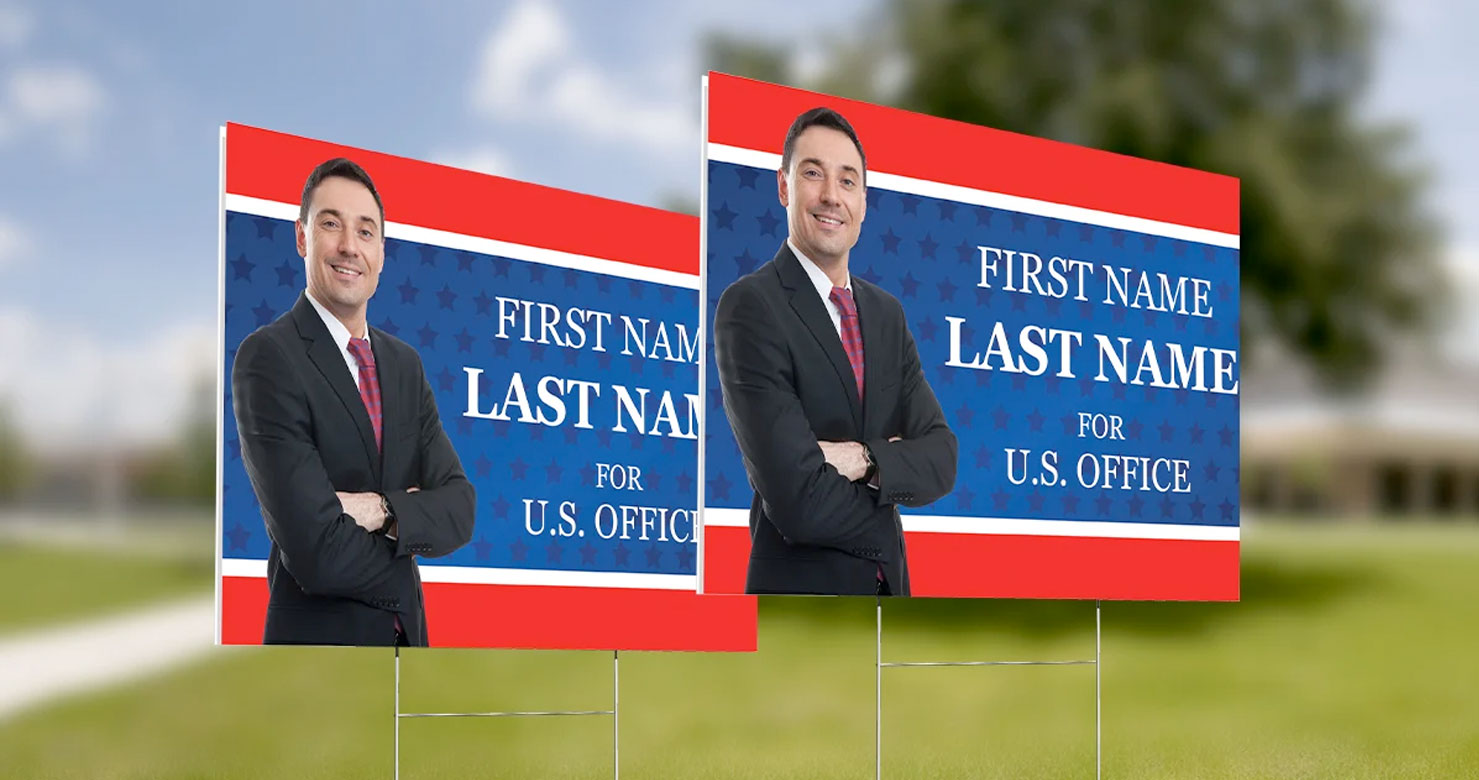
Sign-Based Campaigns Drive Political Engagement
During election season, candidates and teams promoting ballot initiatives seek to capture our attention. They have a short window to build awareness of themselves, their agendas, and their positions. As discussed last month, direct mail is one often-used pillar of customized and potentially personalized marketing put into action during political elections. Another more publicly visible marketing tool is signage.
Signs come in many shapes and forms. There are window clings that can be placed on vehicle windows for mobile marketing or in the windows of campaign offices or supporters’ homes. Feather flags are another type of signage that draw attention from the roadside based on their shape and movement in the wind. Of course, there are grand format displays that can be seen outside from a distance, like billboards and bus wraps. The most popular signage for political campaigns is yard signs. These yard signs are most often made from fluted coroplast panels mounted to a metal frame with stakes for pushing into the ground. The design, physical elements (size and materials), and how it functions in a setting (contextual) make it an excellent format choice.
The best practice for sign artwork is to keep the design simple. The area available for messaging is often small and must be viewed at a distance. Large, clearly legible text using a sans serif font is a must; the best designs use as few words as possible. A common yard sign design features a photo of the candidate with their name and a call-to-action to visit a website or scan a QR code. The same design works for campaigns for propositions, but instead of a candidate’s picture, the campaign logo is what draws attention. Bold, primary colors with reversed (white) type will stand out against backdrops and rival signs. Graphic elements must be oversized to compensate for the speed and viewing distance, as well. Reading a flyer in your hand is quite different from viewing and remembering information on a sign as you pass in a car at 50 mph.
There are physical requirements to consider based on the location and purpose of the sign. How large does the sign need to be? For tips, the United States Sign Council provides guidelines to get the best results. Reaction times for drivers viewing signage while driving is measured in seconds, so the design, size, and placement matter.
Will the sign be used indoors or out? Outdoor signage, like yard signs, needs durable materials to withstand the weather and environment. A UV coating or more durable ink may be required for outdoor signs placed in areas with lots of exposure to the sun. The physical surroundings for the signs should also be considered. Look at the surrounding context to ensure that the sign is visible, so it performs its role in the campaign. For example, most yard signs do not use green or black in the design since they would lack enough contrast with backdrops of grass or paved roads.
Finally, do not forget that there are often local regulations for outdoor signage, particularly for yard signs. Zoning rules in some cities and neighborhoods completely ban their use. Other areas regulate the size, setback from the road, and the window of time for placement and removal.
Signs are a great way to draw attention to campaigns based on routine and daily behavior. Constituents can become aware of the candidate and their viewpoints while walking to the market or driving to work. Signs also provide a valuable link between physical and digital experiences. When used with appropriate calls-to-action, signs can also allow passersby to further engage by visiting your website or scanning a barcode for further information. Level 27 Media / Horizon West Printing makes it easy to get started with the best options for each type of signage and templates for the design.




